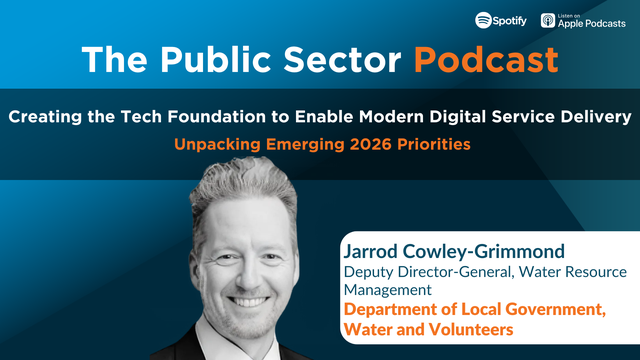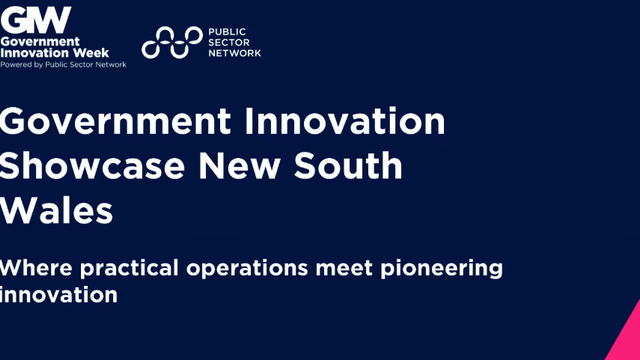

At our recent Digital Government & CX Roadshow 2023, Nancy Norris, the Senior Director, ESG & Digital Trust from BC Ministry of Energy, Mines and Low Carbon Innovation shared her insights on:
Digital-Centric Culture: Build an institutional strength to keep pace with digital transformation and foster a digital and collaborative culture
- Develop a clear vision of what the organization wants to achieve while prioritizing digital transformation
- Create a culture of collaboration and experimentation in cross-functional teams and provide a safe environment to experiment with new technologies and approaches
- Invest in data infrastructure and train employees to use data and evidence to inform policy and government programs
Nancy Norris is the Senior Director of ESG & Digital Trust in the Ministry for Energy, Mines and Low Carbon Innovation for the Government of British Columbia. In her current role, Nancy is responsible for the Energy & Mines Digital Trust (EMDT) project. EMDT enables mining operators to prove where and how their products were made with just a few clicks using digital credentials.
We had the privilege to chat with Nancy after the event to expand on the agenda and dive deeper into digital-centric culture.
Q1. How does EMDT measure the success of its culture of collaboration and experimentation? Are there specific metrics or indicators you use to track the impact of your digital transformation initiatives?
Our focus to date has been on relationship-building with stakeholders and partners. Our work is highly collaborative, and one of our key markers of success is the number of parties using technology, and the strength of our relationships within the community.
We are collaborating with six participants in the digital trust ecosystem, including the Government of British Columbia’s Major Mines Office, Hudbay Minerals Inc., Envirochem Services Inc., PwC, Teck Resources Limited, and the Mining Association of Canada.
Additionally, we measure success through events and awards within our ecosystem. We've presented at over 30 events and our work has earned recognition with the BC Cleantech Award for Government Champion of the Year. These events and relationships signify our commitment to fostering innovation, adaptability, and collaboration within the EMDT project.
As the technology matures, we will measure success by the number of mines adopting digital credentials, the number of organizations or supply chain actors we can share information with, and the improvement in efficiency experienced by the mines utilizing the system once it's implemented. These metrics help us evaluate the impact of our digital transformation initiatives.
Q2. Can you provide examples of successful collaborations and experiments that have already taken place within BC Digital Trust?
Within BC Government, the BC Digital Trust (BCDT) is an initiative that offers services and tools to help people and businesses safely, securely, and confidently identify themselves and communicate online, with the government and beyond.
EMDT and BCDT collaborate to drive digital innovation in B.C., emphasizing iterative technology development. Our team and partners contribute crucial support and expertise, enabling us to bring diverse use cases to life and propel digital innovation in the province. We have fostered a dynamic partnership founded on knowledge sharing, with continuous collaboration between our teams in areas such as adoption, governance, training, and more, further reinforcing our commitment to innovation for British Columbia.
In addition to this, the success of our model has led to an invitation by UN/CEFACT to lead an international project using the same architectures to advise other governments and organizations seeking to exchange data in supply chains. This initiative is a testament to the effectiveness and impact of our collaborations and experiments in the digital trust ecosystem.

Q3. How do you ensure data privacy and security within your initiatives?
EMDT is leveraging digital credentials, which ensure data is private and secure for mining operators. We employ several measures to ensure this:
- Cryptographic Protection: Digital credentials are cryptographically protected and verified in real time. This technology guarantees a high-level of privacy and security when sharing information.
- Customized Information Sharing: Organizations have the flexibility to customize the information they share to meet specific requests, eliminating the need to send entire reports. This approach enhances data privacy by allowing controlled disclosure of information.
- User-Controlled Approval: Holders of these digital credentials have full control over data sharing, preventing unauthorized use and ensuring data remains confidential and is not shared without their consent.
Q4. Can you elaborate on the role of leadership in promoting and sustaining a digital-centric culture?
Leaders need to recognize that digital technology is continuously evolving and be open to adopting new tools that support their vision, understanding that staying current with technology is key to sustaining a digital-centric culture.
Strong leadership begins with a clear vision and goal setting. Establish clear objectives for your team and ensure each member understands how their role fits into the project. From there, it's crucial to empower and trust individuals within the team, allowing them the autonomy to find the most efficient and creative ways to achieve these goals.
This approach isn't confined to promoting a digital culture; it applies to all types of work. Effective leaders must remain open and curious about how digital strategies can be implemented and model that curiosity for their teams.
Q5. How is feedback from participants being addressed to refine and improve EMDT?
Feedback from participants is integral to refining and improving EMDT’s approach and technology, so it’s essential we work closely with partner organizations and end users. This involves getting their feedback to design credentials and user interfaces, create an accurate information flow, and gain insight into existing processes. This project and its development are iterative, constantly evolving based on the feedback we receive.
Moving forward, we remain committed to learning from our stakeholders and those adopting digital credentials to ensure a continuous process of improvement, always striving to provide the best solutions for our adopters.
Q6. Can you share a specific instance where a perceived failure was successfully reframed as a valuable learning opportunity, leading to positive outcomes for a project or team?
During testing, EMDT encountered challenges in several use cases that didn’t allow us to progress Instead of viewing this as a failure, we reframed it as a valuable learning opportunity. This experience enabled us to develop better criteria for assessing which use cases would work effectively, leading to more targeted and successful outcomes.
Understanding how to communicate successfully with different stakeholder groups was crucial. Through a process of trial and error, I learned the importance of organizing smaller meetings with shorter agendas to keep people engaged and informed. Embracing an iterative problem-solving approach was key to turning these challenges into valuable lessons for the project's success.

































